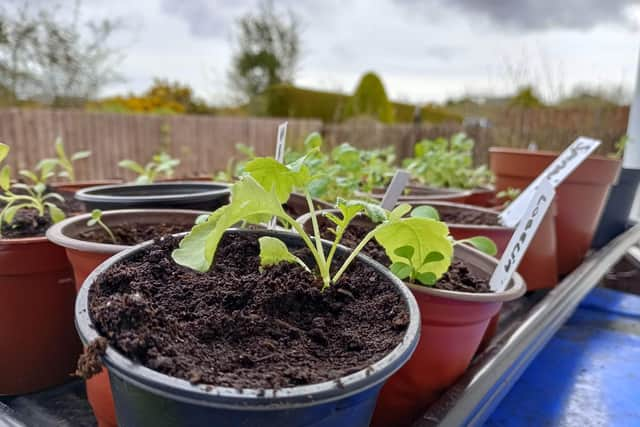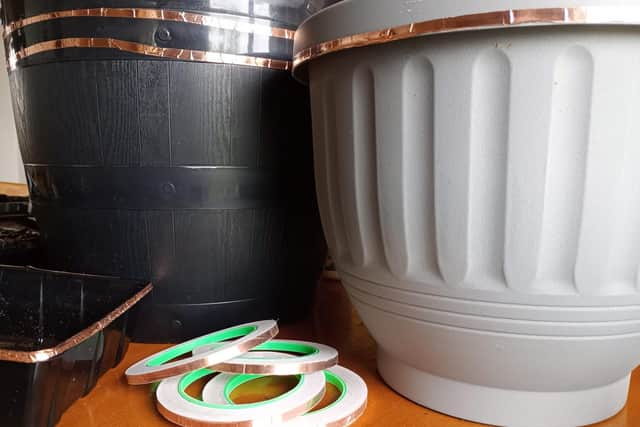Gone To Seed Week 4: Hardening off, Storm Kathleen casualties and copper v slugs
and live on Freeview channel 276
Rain, rain go to Spain...
The worst thing about the Irish weather is you can't really plan for anything. it can change in dramatic fashion not just by the day but by the hour, and the forecasts even for a few days ahead are also constantly being updated. It is not the fault of the meteorologists, it is just where we happen to find ourselves on the world map, directly beneath the never ending dance between the polar air flow and the warmer tropical air blowing in from the Atlantic. That makes long-term and sometimes even short-term weather forecasting a tricky business and a bit of a guessing game.
We are also getting wetter. After checking out some reports it seems that the past eight months have been the wettest by a country mile for many years. I had planned to get part of the garden tilled and beds prepared for direct sowing some seeds in early April but with the ground still so sodden and more rain on the way those plans have had to change and everything will now be started in pots in the hope that we will get some good, dry days later in April and into May.


Advertisement
Hide AdAdvertisement
Hide AdI can’t tell if we are getting more storms or if it just seems that way because they come with a name these days. Cue Storm Kathleen, which although not the worst we have had over recent years, made itself right at home here in the north west, lasting through until Sunday night. A few returning and hardy strawberry plants took a bit of a battering in the wind and look a bit ragged but they have survived, while some tender shoots of broccoli and broad beans I forgot to move to a sheltered spot have been chewed up by Kathleen. Everything else I managed to get indoors before the storm really picked up.
Copper foiling pots
But the time indoors wasn’t wasted at the weekend. I used the opportunity to get some transplanting done and to copper foil some pots to try to repel slugs and snails from munching on the young plants by night once they do go outside. I'll let you know how that goes when the time comes but it seemed to work well when I tried it before. I'm planting a lot more this time round so hopefully it will help avoid a scene of mass destruction in the garden. I used the same thin, adhesive copper foil tape I use in stained glass projects as it stretches much further than the thicker garden copper foil tape you can get. I have a little video demonstration of me foiling the pots on derryjournal.com
Hardening off seedlings


Seedlings love light, and no matter how much of it they get on a windowsill or inside a cold frame or greenhouse, nothing compares to direct sunlight for photosynthesis. But you have to do it gradually with most young plants, or risk losing them.
Seedlings germinated and started indoors need time to acclimatise to the much more turbulent natural world outside and too much sunlight and wind at first can prove fatal – as can bird, gastropods, earwigs and even a neighbourhood cat. They have a lot to contend with and it is best to do it over a week or two for gradually increased amounts of times. If you can, place them in a shaded, north facing spot at first where they will get a bit of sun in the morning before it moves on and won't feel the full force of any sudden gusts. Try to keep them raised up on top of an outdoor bench, table and chairs or even your wheelie bin. Do this for an hour the first day and then bring them back indoors, for two the next and so on. I'd do this for around a fortnight before leaving them out overnight in copper-foiled pots at a raised level. Once the young plants are used to the elements, they can spend their first night under the stars but keep a close eye on forecasts and bring them in if there is any risk of frost or any weather warnings. Pay attention too to the wind speeds predicted for your area. Check them regularly too for any damage by night feeders.
Transplanting tips
Advertisement
Hide AdAdvertisement
Hide AdTo transplant the seedlings, you can use a tea spoon, bottom of a pen or screwdriver or something else of that ilk to help ease them out of their starter containers. Hold them by the leaf and not the stem or root while separating and replanting them as the leaves are much sturdier than the roots and stem and doing it is this way reduces the risk of the stem or young roots breaking and tearing. By this stage it is also a good idea to start giving your seedlings some plant food to help them settle in and to bring them on. I use seaweed and tomato food for just about everything, although acid-loving blueberries and some plants like azaleas will need a different type of ericaceous plant food.
The final ingredient we need is some sunny and dry weather. I’ll not be holding my breath, but sure here's hoping!
Comment Guidelines
National World encourages reader discussion on our stories. User feedback, insights and back-and-forth exchanges add a rich layer of context to reporting. Please review our Community Guidelines before commenting.